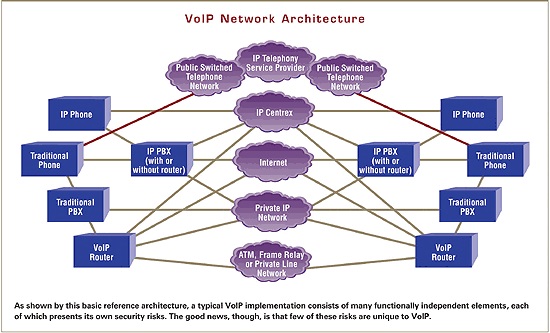VoIP (voice over IP)
VoIP (voice over IP) is the transmission of voice and multimedia content over Internet Protocol (IP) networks. VoIP is enabled by a group of technologies and methodologies used to deliver voice communications over the internet, enterprise local area networks or wide area networks.
VoIP historically referred to using IP to connect private branch exchanges (PBXs), but the term is now used interchangeable with IP telephony.
How does VoIP work?
VoIP encapsulates audio via a codec into data packets, transmits them across an IP network and unencapsulates them back into audio at the other end of the connection. VoIP endpoints include dedicated desktop VoIP phones, softphone applications running on PCs and mobile devices, and WebRTC-enabled browsers.
By eliminating the use of circuit-switched networks for voice, VoIP reduces network infrastructure costs, enables providers to deliver voice services over their broadband and private networks, and allows enterprises to operate a single voice and data network. VoIP also piggy-backs on the resiliency of IP-based networks by enabling fast failover around outages and redundant communications between endpoints and networks.
VoIP protocols and standards
VoIP endpoints typically use International Telecommunication Union (ITU) standard codecs, such as G.711, which is the standard for transmitting uncompressed packets, or G.729, which is the standard for compressed packets. Many equipment vendors also use their own proprietary codecs. Voice quality may suffer when compression is used, but compression reduces bandwidth requirements. VoIP typically supports non-voice communications via the ITU T.38 protocol for sending faxes over a VoIP or IP network in real time.
Once voice is encapsulated onto IP, it is typically transmitted via the real-time transport protocol or through its encrypted variant, secure real-time transport protocol. The Session Initiation Protocol (SIP) is most often used for signaling that is necessary to create, maintain and end calls. Within enterprise or private networks, quality of service is typically used to prioritize voice traffic over non-latency-sensitive applications to ensure acceptable voice quality.
